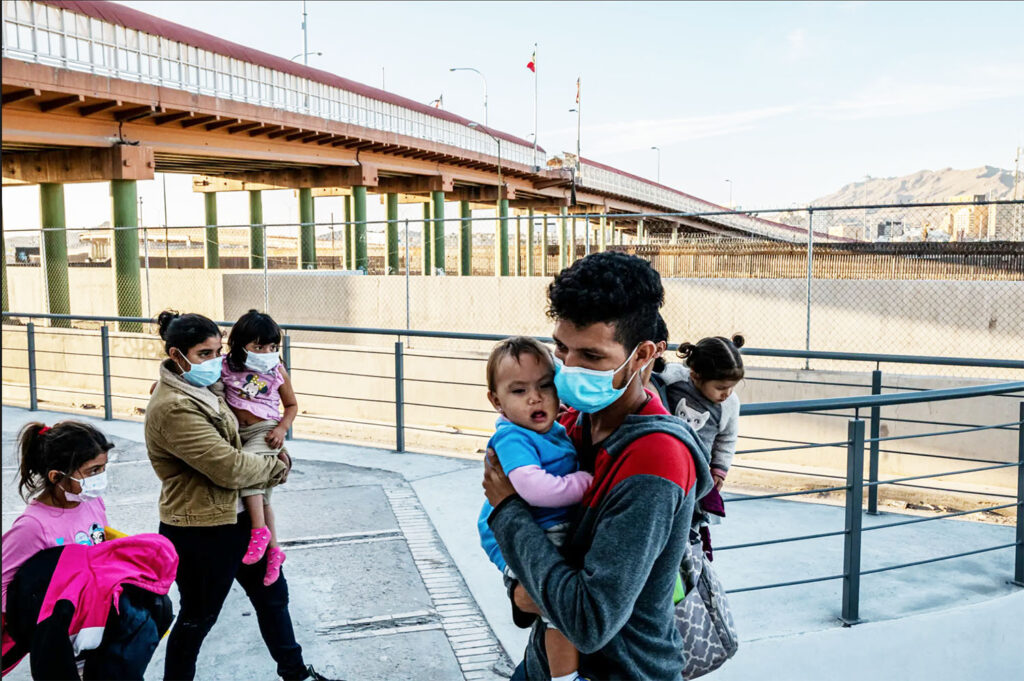By Alliance President Terry Gips
Immigration is an explosive, polarizing issue facing the US that has significant ramifications for persecuted people and both political parties in the mid-term elections. It’s being amped up by shipments of migrants to northern states by the governors of FL and TX. We wanted to explore the challenges and go deeper to look at their root causes with the aid of some excellent NY Times reporting. Hopefully, it can shed light on potential solutions embracing all aspects of sustainability.
The enormity of the challenge is clear. Migrant encounters with Border Patrol at the U.S. southern border topped 2.1 million in the past year, setting a new record, according to the Miami Herald. The majority have been from Mexico, followed by Guatemala, Honduras and El Salvador, with most seeking to escape poverty and extreme levels of violence. Many are seeking asylum, a US legal protection for those fleeing persecution in their home countries.
Americans have strong views on immigration, often with Republicans and Democrats in general agreement. According to the latest Pew Poll from Sep 8, 73% of Americans say increasing security along the US-Mexico border to reduce illegal crossings should be a very or somewhat important goal of US policy, with nearly all Republicans agreeing and a smaller majority of Democrats.
Significant majorities agree it’s important to take in refugees escaping violence and war (72%) and to allow immigrants who came to the country illegally as children to remain in the US and apply for legal status (72%), with more Democratic than Republican support. 57% feel it’s very or somewhat important to increase deportations of immigrants currently in the US illegally with a similar percent feeling it’s important to establish a way for most immigrants currently in the US to stay legally.
So, what are the politics? Jasmine Aguilera writes in Time, the Republican’s Commitment to America plan only references immigration with calls to “’secure America’s border’…it offers only vague policy solutions.” She says this was intentional, given that “Immigration is probably the most explosive issue for Republicans,” according to Republican Congressional aide Brendan Buck. Buck believes the plan is intended to unite Republicans on messaging and differentiate themselves from Democrats, but to keep the language imprecise so as not to be beholden to specific policy expectations.
On the other side of the aisle, David Leonhardt points out in the NY Times, “Historically, many progressives supported immigration restrictions as a way to keep U.S. wages high. Today, working-class Americans — including many Asian-American, Black and Latino voters — tend to favor more restrictions than progressive Democrats, who are often high-earning professionals, do. This contrast may play a role in Republicans’ recent gains among minority voters.”
Leonhardt explains that “While Donald Trump was president, he smoothed over the Democrats’ internal tensions because they could unite in opposition to him. Trump used racist language; Democrats abhorred it. Trump separated families and locked children in cages; Democrats promised to end those policies. Trump said he would build a border wall, paid for by Mexico; Democrats mocked his failure.”
Leonhardt concludes, “One of the advantages to the Democrats’ old approach to immigration was that it was easy to describe: Be firm at the border, be generous to people who have lived in the U.S. for years. The new approach also has an abiding idea: Be more welcoming to people who want to enter the country. But Democrats still have not figured out the limits to that idea, which has created an early problem for the Biden presidency.”
So with that backdrop, this excellent NYT piece goes looks at one of the primary sources of the border battle: Our country’s inability to persuade increasingly autocratic Central American leaders (even dictatorial in the case of Nicaragua) to stop the violence and human rights abuses in their countries that fuels massive migration in exchange for significant US funding.
It’s clear we’ve had a lame deal with the autocratic leaders in those countries: We won’t publicly criticize their widespread abuses in exchange for them blocking their people from leaving with the incentive of US funding. We’ve kept our end of the deal but in most cases they haven’t kept theirs, while stepping up their abuses.
It’s a failed strategy in which people suffer, our border is overwhelmed, autocratic-minded governors build their base through horrible PR stunts, Democrats are in disarray with no real response (other than these governors are horrible and not good Christians) and Central American autocrats further prosper with no prospects for anything changing.
Who helped write the playbook these autocrats are following? A former US President. They saw an excellent example of how they could destroy a democracy through lies, deception, self-dealing, corruption, gaslighting, and attacks on democratic institutions and even voting, while conveniently overlooking extensive bribery, corruption and violence.
This begs the questions: Is the US the beacon on the hill for the world to emulate? Can the US really be an island in a world filled with pain and suffering? Are we willing to help address the need for safety, sustainability, health and equity in these autocracies in order to have a systemic solution to our border battles?

